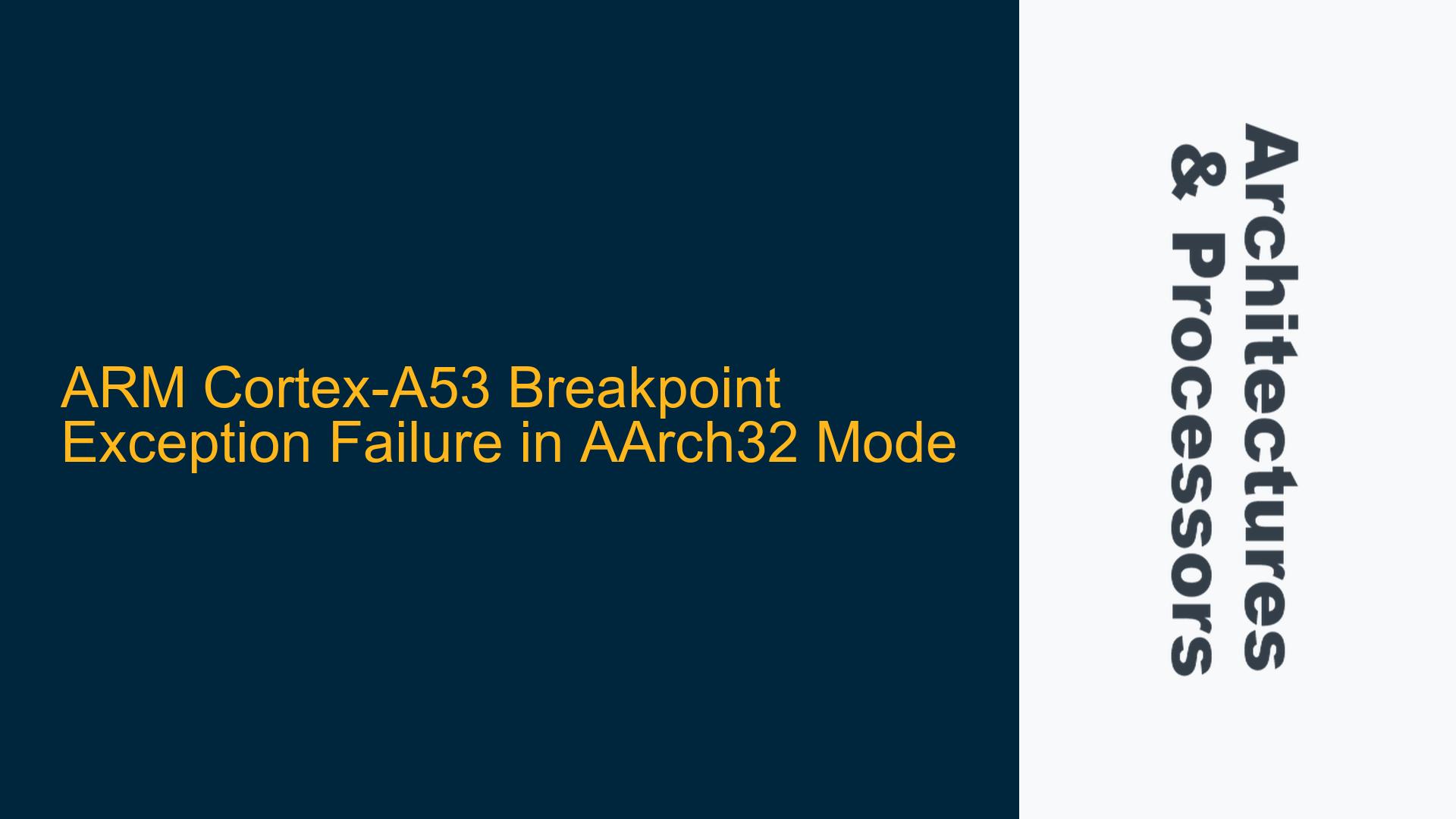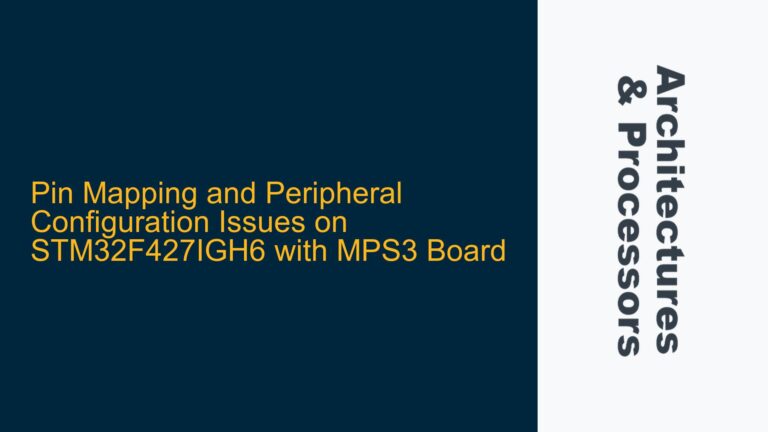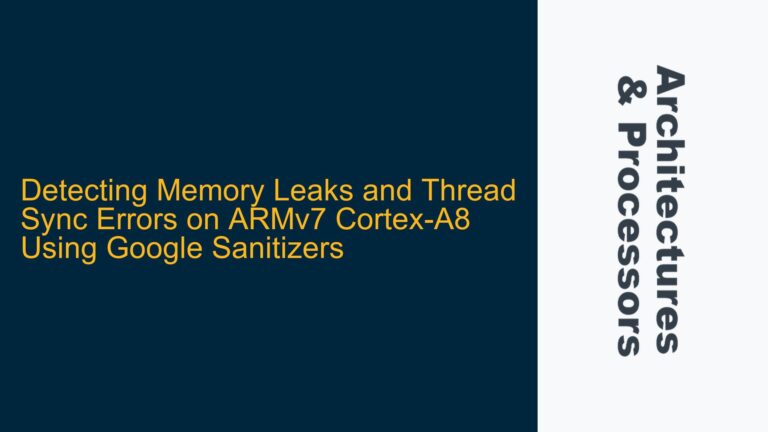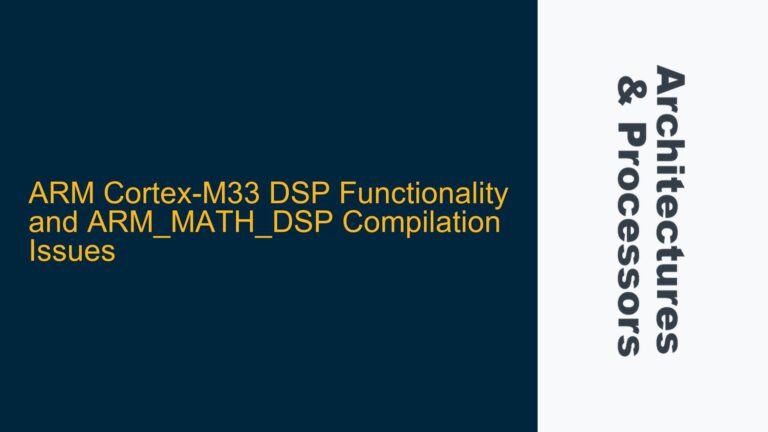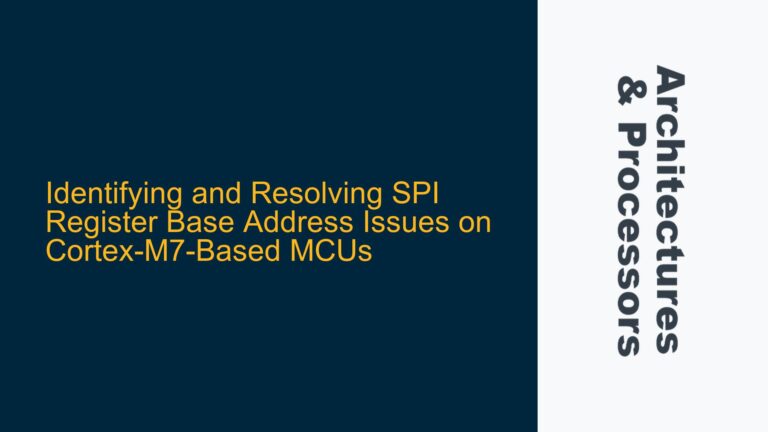ARM Cortex-A53 Breakpoint Exception Failure in AArch32 Mode
The ARM Cortex-A53 processor, when operating in AArch32 mode, provides a robust set of debug capabilities that can be leveraged for self-hosted debugging. However, setting up breakpoints to trigger exceptions can be challenging, especially when transitioning between different hardware platforms such as the Raspberry Pi 1B and Raspberry Pi 3B. The core issue revolves around the failure to trigger a breakpoint exception despite correctly configuring the debug registers, specifically the DBGDSCRext, DBGBVR0, and DBGBCR0 registers. This issue is particularly perplexing because the same configuration works on an older Raspberry Pi 1B but fails on the Raspberry Pi 3B, suggesting a platform-specific or architectural nuance that needs to be addressed.
The Cortex-A53 processor, part of the ARMv8-A architecture, supports both AArch64 and AArch32 execution states. In AArch32 mode, the processor provides a set of debug registers that can be used to set breakpoints, watchpoints, and other debugging features. The DBGDSCRext register controls the overall debug functionality, while the DBGBVR0 and DBGBCR0 registers are used to set the breakpoint address and control the breakpoint behavior, respectively. When a breakpoint is hit, the processor should generate a debug exception, which can be handled by the operating system or a debug monitor.
In the described scenario, the breakpoint is set at address 0x8200, and the DBGBCR0 register is configured to enable the breakpoint on an address match. However, when the target code at 0x8200 is executed, no exception is triggered. This suggests that either the breakpoint is not being correctly recognized by the processor, or the exception handling mechanism is not functioning as expected.
DBGDSCRext Configuration and Breakpoint Recognition Issues
The first potential cause of the breakpoint exception failure lies in the configuration of the DBGDSCRext register. The DBGDSCRext register is responsible for enabling the debug functionality, including the ability to generate breakpoint exceptions. In the provided configuration, the MDBGen bit (bit 15) is set to enable the debug monitor mode. However, there are several other bits in the DBGDSCRext register that could affect the breakpoint behavior, such as the SPIDEN, SPNIDEN, and HDE bits, which control whether secure, non-secure, and hypervisor debug exceptions are enabled.
Another potential issue is the timing of the debug register configuration. The Cortex-A53 processor requires that certain operations, such as enabling debug functionality, be performed in a specific order. If the DBGDSCRext register is not configured correctly before setting the breakpoint address and control registers, the breakpoint may not be recognized. Additionally, the processor may require a synchronization barrier (e.g., an ISB instruction) after configuring the debug registers to ensure that the changes take effect before the next instruction is executed.
The difference in behavior between the Raspberry Pi 1B and Raspberry Pi 3B could also be attributed to differences in the memory system or the implementation of the ARM architecture. The Raspberry Pi 3B uses a more complex memory system with multiple levels of cache and a different memory map compared to the Raspberry Pi 1B. These differences could affect how the processor handles breakpoints, especially if the breakpoint address is located in a memory region that is cached or subject to memory protection.
Debug Register Configuration and Exception Handling Verification
To troubleshoot the breakpoint exception failure, a systematic approach should be taken to verify the configuration of the debug registers and the exception handling mechanism. The first step is to ensure that the DBGDSCRext register is correctly configured to enable debug functionality. This includes setting the MDBGen bit and verifying that other relevant bits, such as SPIDEN and SPNIDEN, are configured according to the desired debug mode.
Next, the breakpoint address and control registers (DBGBVR0 and DBGBCR0) should be verified. The DBGBVR0 register should contain the correct address (0x8200 in this case), and the DBGBCR0 register should be configured to enable the breakpoint on an address match. It is also important to ensure that the breakpoint address is aligned correctly, as the Cortex-A53 processor may require breakpoint addresses to be aligned to specific boundaries depending on the breakpoint type.
After configuring the debug registers, a synchronization barrier (e.g., ISB instruction) should be executed to ensure that the changes take effect. This is particularly important when transitioning between different states or modes, such as enabling debug functionality and then executing the target code.
Once the debug registers are configured, the exception handling mechanism should be verified. This includes ensuring that the processor is in the correct mode (system mode in this case) and that the exception vector table is correctly set up to handle debug exceptions. The exception handler should be able to recognize the debug exception and take appropriate action, such as halting the processor or entering a debug monitor.
If the breakpoint exception is still not triggered, additional debugging techniques can be employed, such as using a hardware debugger to inspect the state of the debug registers and the processor at the time of the breakpoint. This can help identify any discrepancies between the expected and actual behavior of the processor.
In conclusion, the failure to trigger a breakpoint exception on the ARM Cortex-A53 processor in AArch32 mode can be attributed to several potential causes, including incorrect configuration of the DBGDSCRext register, timing issues with debug register configuration, and differences in the memory system between hardware platforms. By systematically verifying the debug register configuration and the exception handling mechanism, and by using additional debugging techniques if necessary, the issue can be resolved and the breakpoint exception can be successfully triggered.
